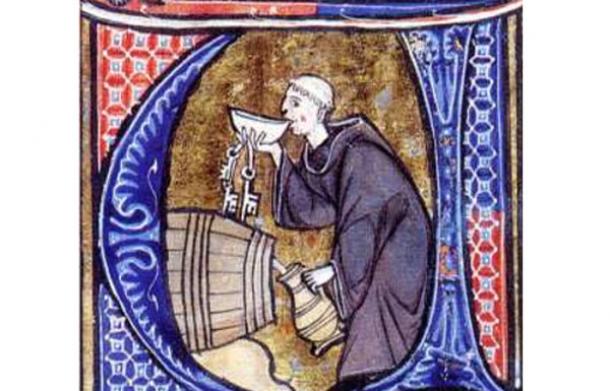The Late Middle Ages brought about a great shift in
the ways of battle, forever changing the method in which combat occurred. That shift
came in the form of gunpowder and cannon. Although gunpowder was developed in
China centuries before, it was not until the fourteenth century did European armies
begin to fully appreciate the destructive power that gunpowder offered and utilize
cannon fire against one another. The English and French likely borrowed the
idea to use gunpowder in war from the Moors in Spain, who used artillery
against the Christian forces who attempted to expel the Muslims from Iberia.
Unlike later wheeled versions, the early cannon were
mounted on stands and consisted of a “bulbous bottle” which served as the
barrel. An illuminated manuscript from 1327 shows the first depiction of a
European cannon, a pot-de-fer, being
fired by a gunner who stands well back from the barrel while he lights the
charge with a hot iron. The manuscript shows the cannon firing a bolt toward
the wall of a besieged castle.
 |
| A 1327 English manuscript showing the first recorded European cannon. See the vase-like shape, the four-legged stand, as well as the pot-fire used by the gunner to ignite the powder charge. |
According to Judith Bennett only ten years after the
1327 manuscript , the Hundred Years’ War began, pitting France against England.
The conflict was a contest between the two countries as to who the rightful
ruler of the lands that make up modern-day France truly was. As with all wars,
there was effort given to utilize the most up-to-date weaponry. A Florentine
account of the battle at Crécy tells of the English uses cannon against their
enemy: “The English guns cast iron balls by means of fire… They made a noise
like thunder and caused much loss in men and horses… The Genoese were
continually hit by the archers and the gunners… [until] the whole plain was
covered by men struck down by arrows and cannon balls.” Not only were cannon used in open battle, but they reached their full medieval potential when armies would lay siege to fortifications. Records and
manuscripts recount the use of artillery during the 1429 siege of Orleans.
 |
| A 1493 depiction of the 1429 Siege of Orleans. Note the wheeled field cannon in the center of the picture.The gunner working the front cannon holds an ax-headed spear, called a halberd, as well as his pot-fire. |
Although these ‘new’ weapons offered much to their
owners, there were many problems that accompanied them. Mobility was a big
issue, with many of the large guns requiring teams of oxen or horses to move
them. The addition of wheels in the later fourteenth century allowed for easier
transportation and better fire efficiency.
 |
| Massive siege cannon similar to the ones used by the Ottomans during the 1453 Siege of Constantinople |
In addition to large siege cannon
and mobile field artillery, the
development of smaller handheld cannon allowed
individual soldiers to fire projectiles at enemy soldiers. These first handguns
were the ancestors of modern-day rifles and pistols.
 |
Illustration from the Bellifortis, a fully illustrated manuscript
on medieval military technology from the 15th century,
showing the use of a personal hand cannon. |
Throughout the remainder of the war, cannon designs were changed and improved. Following the medieval period there was still more improvements that were made that made modern artillery even more powerful than the medieval models. Although outdated compared to later designs, the cannon of the middle ages, especially during the fourteenth and fifteenth centuries contributed greatly to the developments of battle tactics and procedures.
My sources and for more interesting information on
cannon in the medieval world see:
Judith
Bennett’s Medieval Europe: A Short History p.323-327 (Hundred Years’ War)



















































